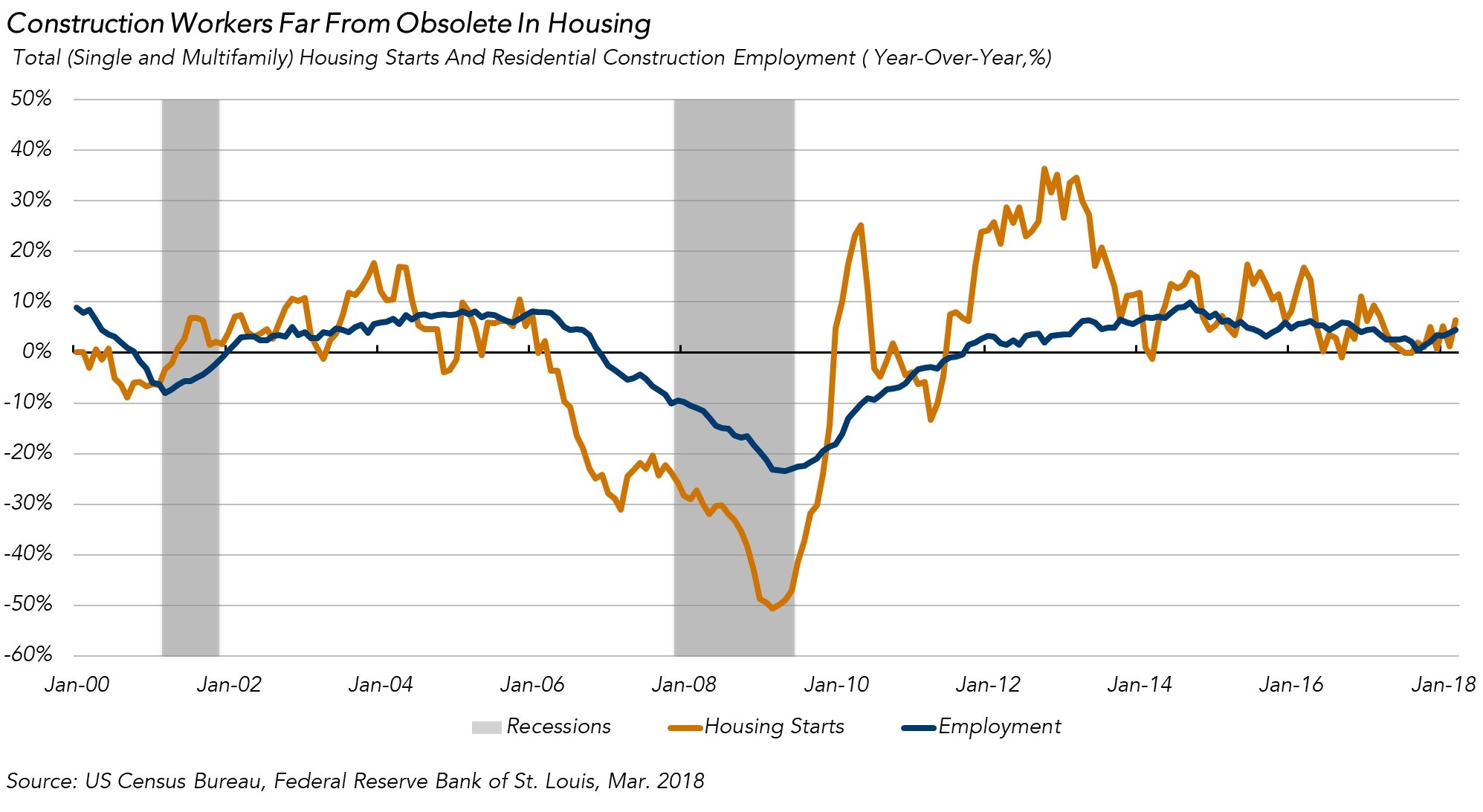It’s no secret that the limited supply of homes for sale is the biggest issue facing the housing market today. From a short-term perspective, this month’s overall pace of housing starts, 1.32 million units, may modestly alleviate the supply shortage. Housing starts increased 1.9 percent month over month and are 10.9 percent higher compared with March 2017. Housing completions, the number of net new homes added to the housing stock, increased by 1.9 percent compared with a year ago, which provides some immediate relief for the supply shortage.
“Two important trends signal that some modest relief for the housing supply shortage is on the way – the continued year-over-year growth in completions means more homes on the market in the short-term and the dramatic rise in construction employment this month indicates housing construction is likely to increase in the months ahead.”
As we analyze yesterday’s housing starts data, it’s important to also consider the impact of construction labor on the velocity of new home construction, as this is an indicator of long-term future housing supply. The employment situation report, released earlier this month, reported an increase of nearly 8,000 residential construction jobs between February 2018 and March 2018, making March the best month for residential construction labor growth since August 2008. The number of residential construction jobs is now 4.5 percent higher than a year ago. The growth in residential construction jobs supports further improvement in the pace of home building because building a home does not readily lend itself to outsourcing and automation. Additionally, while builders continue to voice frustration about the lack of developed lots and the rise in material costs, builder confidence remains high amidst strong buyer demand.
The continued year-over-year growth in completions means more homes on the market in the short-term and the dramatic rise in construction employment this month indicates housing construction is likely to increase in the months ahead. Residential construction employment is easing as a headwind to future housing starts.

March 2018 Housing Starts
For the month of March 2018, the new residential construction report shows that:
- The number of permits issued, a leading indicator of housing starts, increased by 7.5 percent year over year.
- Housing starts increased by 10.9 percent, compared with a year ago.
- The stock of housing units authorized to be built increased by 13.0 percent, and the number of housing units under construction also increased by 4.7 percent on an annual basis.
- The number of completed homes, which is additional new net supply added to the housing stock, increased by 1.9 percent compared with a year ago.
Chief Economist Analysis Highlights
- In February, the overall pace of housing starts, at 1.32 million units, increased 1.9 percent from the previous month. Based on the less volatile three-month moving average, the volume of total residential (single- and multi-family) housing starts is 37,000 units more than February 2018 and 80,000 units higher than a year ago.
- Housing starts are an important source of future supply and, as we have previously discussed in our Real House Price Index (RHPI), the housing market is facing a supply constraint problem.
- An estimated seasonally adjusted annualized rate of 1.22 million housing units were completed in March, a 1.9 percent increase from the March 2017 figure of 1.19 million – a modest step toward producing enough housing to meet market demand.
- The annual amount of completions necessary just to keep pace with growing millennial demand and eliminate the housing shortage is estimated to be 1.5 million units (the housing starts historical average).
What Insight Does Monthly Housing Start Data Provide?
Housing starts data reports the number of housing units on which construction has been started in the month reported, providing a gauge of future real estate supply levels. The source of monthly housing starts data is the “New Residential Construction Report” issued by the U.S. Census Bureau jointly with the U.S. Department of Housing and Urban Development (HUD). The data is derived from surveys of homebuilders nationwide, and three metrics are provided: building permits, housing starts and housing completions. Building permits are a leading indicator of housing starts and completions, providing insight into the housing market and overall economic activity in upcoming months. Housing starts reflect the commitment of home builders to new construction, as home builders usually don't start building a house unless they are confident it will sell upon completion. Changes in the pace of housing starts tells us a lot about the future supply of homes available in the housing market. In addition, increase in housing starts can lead to increases in construction employment, which benefits the overall economy. Once the home is completed and sold, it generates revenue for the home builder and other related industries, and is added to the housing stock.



